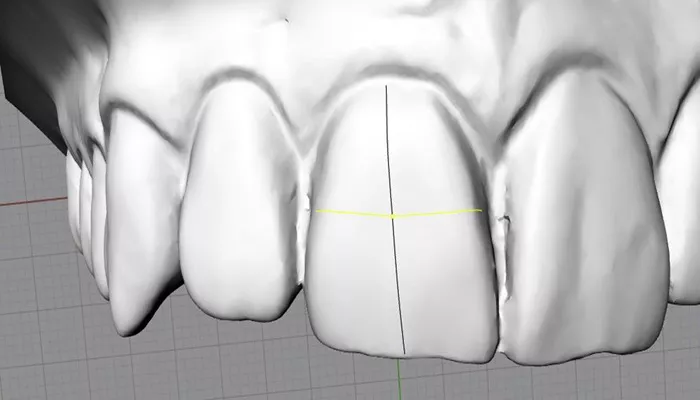Prosthodontic measurement of teeth, particularly the concept of the “teeth is line,” is a fundamental aspect of prosthodontics that ensures the functional and esthetic success of dental restorations. This article provides a detailed exploration of prosthodontic measurement, focusing on its definition, clinical importance, methods, and application in restorative dentistry.
Introduction to Prosthodontic Measurement of Teeth
Prosthodontics is a specialized branch of dentistry dedicated to the restoration and replacement of missing or damaged teeth. A critical component of this specialty is the accurate measurement of teeth and their spatial relationships, often referred to as prosthodontic measurement. This process involves assessing the size, shape, position, and alignment of teeth to create prostheses—such as crowns, bridges, dentures, and implants—that restore oral function and esthetics.
One key concept within prosthodontic measurement is the “teeth is line,” which refers to the precise alignment and proportional relationships of teeth within the dental arch. This line guides the positioning of artificial teeth to harmonize with the patient’s facial features and occlusal function, ensuring a natural appearance and comfortable bite.
What Is the Prosthodontic Measurement of Teeth Is Line?
The “teeth is line” in prosthodontics can be understood as a reference line or plane that helps define the correct positioning and orientation of teeth within the oral cavity. It is essential for establishing occlusion, vertical dimension, and esthetic proportions in dental restorations.
Definition and Importance
Prosthodontic measurement involves quantifying the dimensions and spatial relationships of teeth and related oral structures. This includes linear measurements (e.g., crown height, width), angular measurements (e.g., inclination), and spatial positioning relative to anatomical landmarks.
The teeth is line serves as a guide to align teeth in a way that supports proper function (chewing, speaking) and esthetics (smile design, facial harmony).
Accurate measurements prevent complications such as malocclusion, temporomandibular joint disorders, and prosthesis failure, which can arise from improper tooth positioning or vertical dimension discrepancies.
The Role of Vertical Dimension in Prosthodontic Measurement
A crucial aspect closely related to the teeth is line is the vertical dimension of occlusion (VDO), which is the distance between two anatomical points (usually the nose and chin) when the teeth are in maximum intercuspation. The VDO determines the height of the lower face and directly affects the positioning of teeth along the vertical axis.
Vertical Dimension at Occlusion (VDO): The facial height when teeth or occlusal rims contact, critical for functional prosthesis fabrication.
Vertical Dimension at Rest (VDR): The facial height when the mandible is at rest, used as a baseline to establish VDO.
Changes in vertical dimension due to tooth wear, loss, or skeletal changes necessitate precise prosthodontic measurement to restore proper occlusion and esthetics.
Methods of Prosthodontic Measurement
Several techniques are employed to measure teeth and establish the teeth is line accurately:
Clinical and Anthropometric Methods
Direct facial measurements between anatomical landmarks (nose, chin) using rulers or calipers.
Use of facial markers to identify reference points for consistent measurement.
Phonetic and functional assessments, such as observing speech sounds and swallowing patterns, to determine rest and occlusal positions.
Digital and Three-Dimensional Techniques
Intraoral scanners and 3D imaging provide precise digital models of teeth and oral structures.
Software tools analyze crown dimensions, tooth angulations, and arch form, enabling detailed measurement and planning for prosthetic design.
Digital measurements improve accuracy, repeatability, and allow for simulation of prosthetic outcomes.
Specialized Prosthodontic Tools
Instruments like Chu’s Proportion Gauge help assess tooth size proportions and guide esthetic alignment along the teeth is line.
These tools facilitate quick, economical, and standardized measurement of tooth dimensions to maintain harmonious proportions within the dental arch.
Clinical Applications of Prosthodontic Measurement of Teeth Is Line
Restoration of Edentulous Patients
For patients without natural teeth, prosthodontic measurement is vital to recreate the teeth is line that supports facial esthetics and functional occlusion. Establishing the correct vertical dimension and tooth positioning ensures comfort and effective mastication.
Fixed and Removable Prostheses
Accurate measurement guides the fabrication of crowns, bridges, and dentures that fit precisely and function harmoniously with the patient’s occlusion.
It prevents premature prosthesis failure and protects residual oral tissues by ensuring stable tooth positioning and occlusal balance.
Management of Occlusal Disorders
Prosthodontic measurement helps diagnose and manage malocclusion, bruxism, and temporomandibular joint disorders by analyzing the spatial relationships of teeth.
Custom occlusal splints and restorations designed with precise measurements reduce muscular pain and protect teeth from excessive forces.
Evolution and Advances in Prosthodontic Measurement
The concept of prosthodontic measurement has evolved from simple anthropometric approaches to sophisticated digital methods:
Early methods relied on manual measurements between facial landmarks.
Mid-20th-century advances introduced cephalometric radiographs and anthropometric studies to understand craniofacial relationships.
Modern prosthodontics integrates 3D scanning, computer-aided design (CAD), and digital analysis software for highly accurate, reproducible measurements.
Conclusion
Prosthodontic measurement of teeth, particularly the establishment of the teeth is line, is a cornerstone of successful dental rehabilitation. It ensures that prosthetic restorations are functionally effective, esthetically pleasing, and biologically compatible. Advances in digital technology continue to enhance the precision and efficiency of these measurements, improving patient outcomes in prosthodontic care.
By understanding and applying the principles of prosthodontic measurement, clinicians can restore oral health, function, and confidence to patients with missing or damaged teeth.

